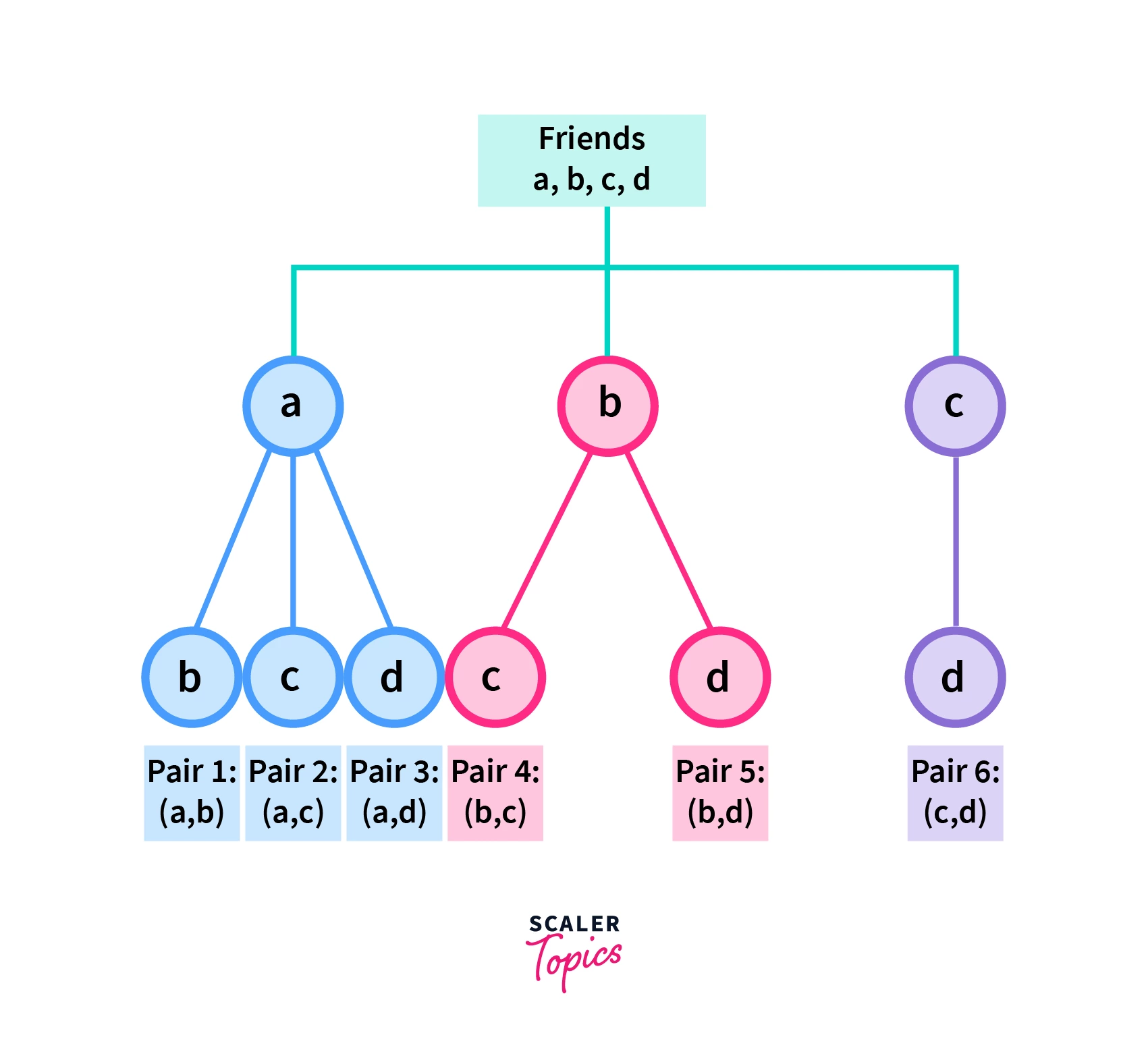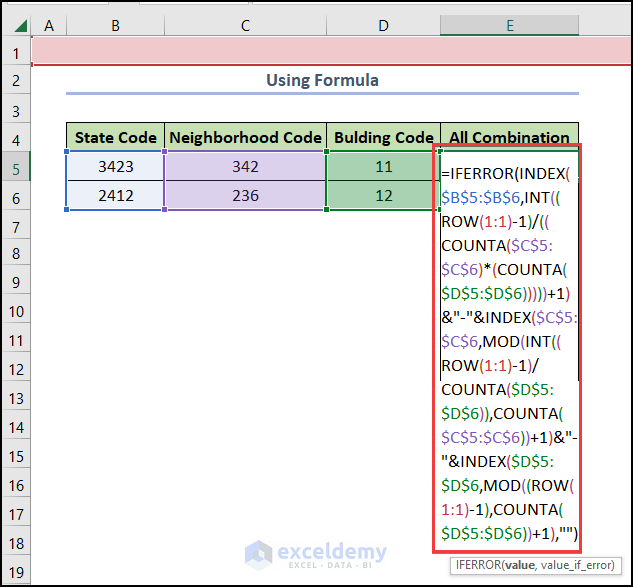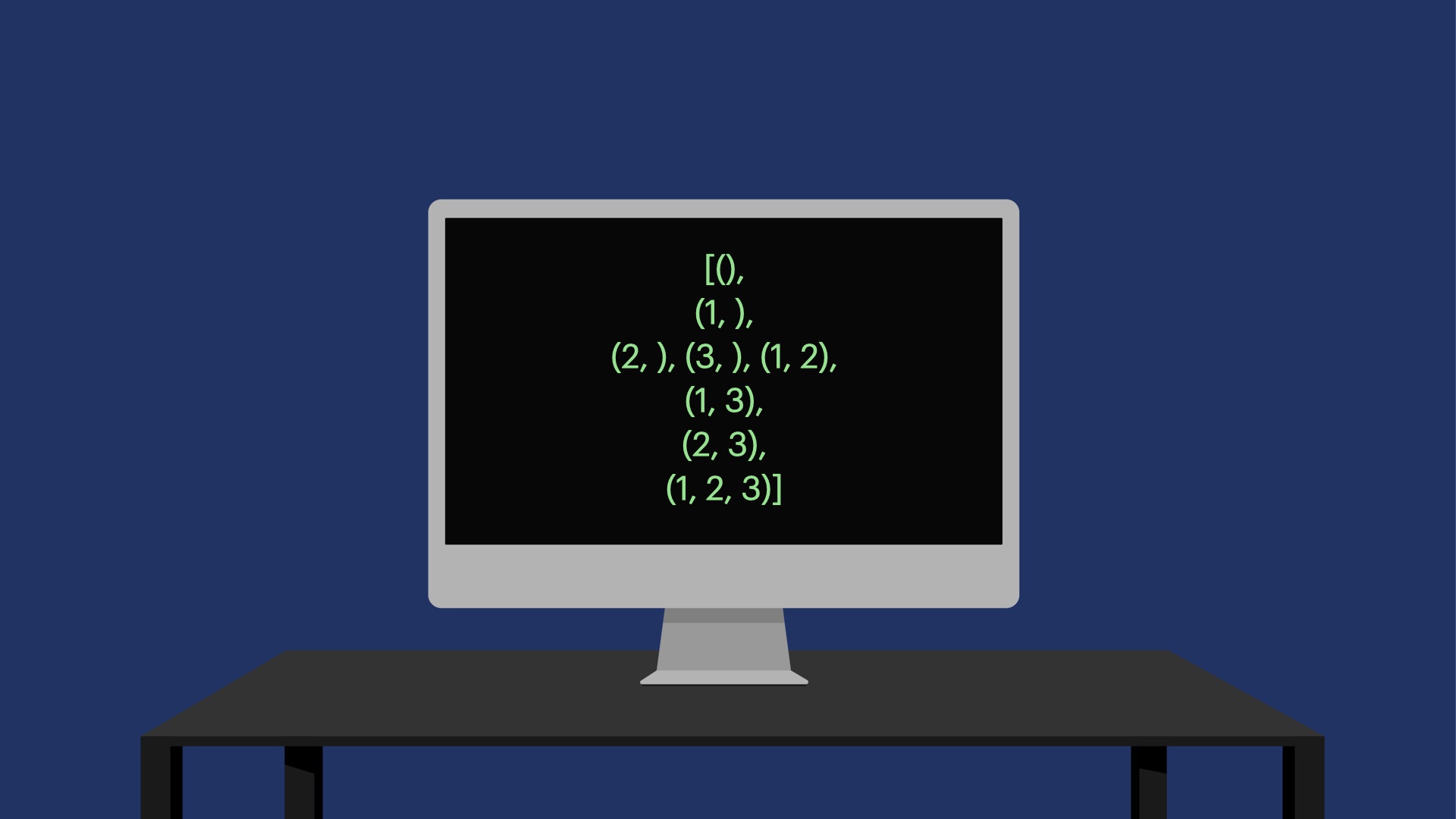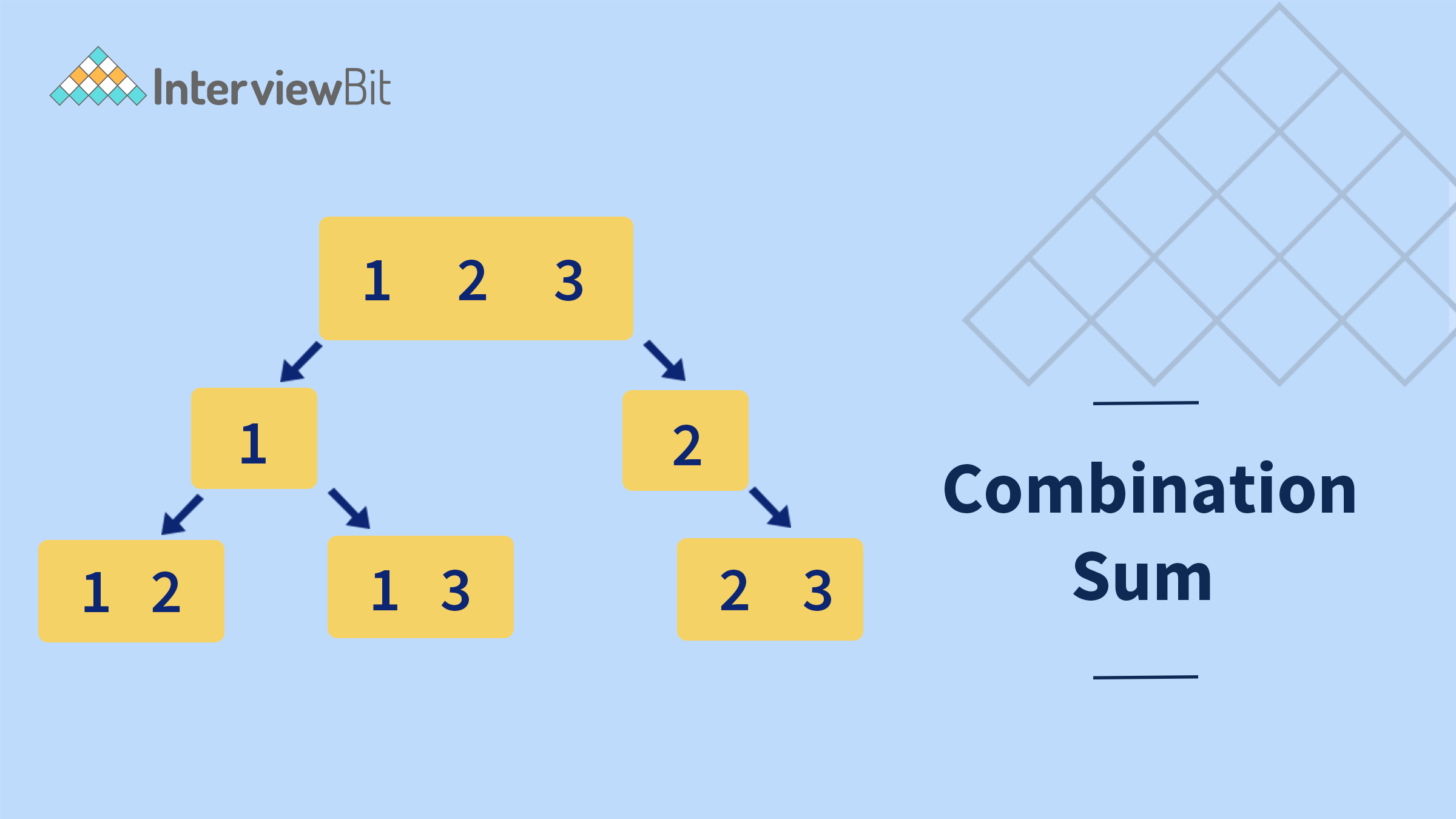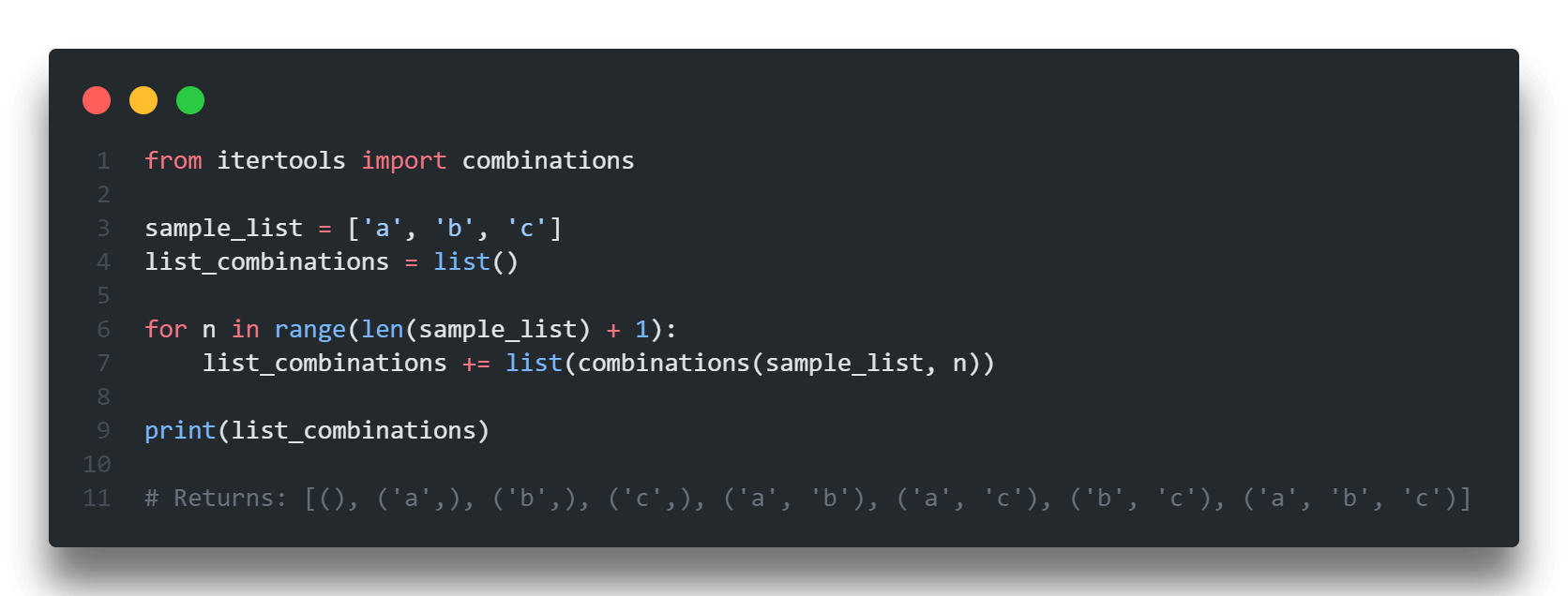Outrageous Tips About How To Generate All Combinations Of A List Axis Python Matplotlib

Dec 7, 2019 at 4:40.
How to generate all combinations of a list. Lottery numbers) 4 (~ 4.0) if order matters (e.g. It also generates all the possible combination. Tool to generate lists of multiple choice combinations by combining a selection with one choice by option / category or by drawing a random choice.
This function returns an iterator over all possible combinations of the elements in the input iterable with the specified length. The combinations() function from the itertools module is a direct and efficient way to get all pairwise. Gets every combination of things in a list returned as a list of lists should be read :
Initialize an empty list for. If order does not matter (e.g. Add all combinations of a certain size to the end of a list.
Import itertools package and initialize list_1 and list_2. Lst = [1, 2, 3] combs = [] for i in xrange(1, len(lst)+1): This combinations calculator generates all possible combinations of m elements from the set of n elements.
Cartesian product of x and y array points into single array of 2d points. To find all the combinations of a python list, also known as a powerset, follow these steps: Now that we know when to find.
To create combinations without using itertools, iterate the list one by one and fix the first element of the list and make combinations with the remaining list. For example, if you have a set from 3 elements, {a, b, c}, the all. This post explores how to list all possible combinations from multiple lists in excel (known as a cartesian join).
This tool generates the number of all possible combinations, given a total number of objects and sample size. Another c# version with lazy generation of the combination indices. Here is a code snippet that demonstrates how to use the.
With the row and counta functions, we can create our own counter that cycles through all possible combinations in a list. The easiest, quickest way to create a paraphrase is to use a free paraphrase generator like the one at the top of this page. You could use all combinations of a list to generate all possible solutions to a problem.
This method utilizes the itertools.combinations function to generate all possible combinations of different lengths. Select 3 unique numbers from 1 to 4. Using permutation () of itertools package and zip () function.
List(itertools.permutations([1, 2, 3])) adapted from here is a demonstration of how itertools.permutations might be implemented: This version maintains a single array of indices to define a mapping between the list of all. Df = pd.dataframe(cartesian((l1, l2))) for more verbose but possibly more efficient variants see numpy:
